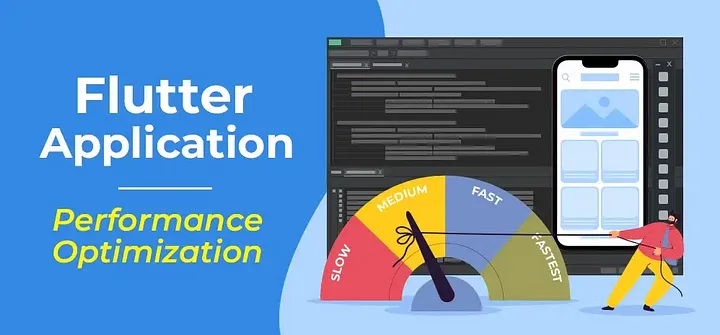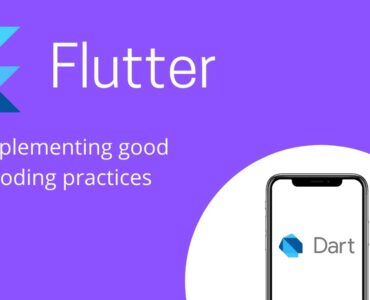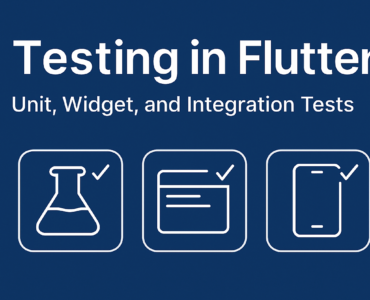As a Flutter developer, you want to create apps that are not only visually appealing but also fast and smooth. A well-performing app is essential for providing a great user experience, reducing bounce rates, and increasing engagement. In this blog post, we’ll share tips and tricks for optimizing Flutter app performance, helping you build apps that run seamlessly on various devices.
Why is Performance Optimization Important?
Before we dive into the optimization techniques, let’s discuss why performance optimization is crucial for your Flutter app:
- User Experience: A fast and smooth app provides a better user experience, leading to higher engagement and retention rates.
- Battery Life: Optimized apps consume less battery power, reducing the risk of battery drain and increasing overall device performance.
- Competitive Advantage: A well-performing app can be a key differentiator in a crowded app market, setting your app apart from competitors.
- Search Engine Optimization (SEO): Google considers app performance when ranking apps in search results, so optimizing your app’s performance can improve its visibility.
Optimization Techniques
Now that we’ve covered the importance of performance optimization, let’s explore some actionable tips and tricks for optimizing your Flutter app:
1. Use Efficient Widgets
Flutter provides a wide range of widgets, each with its performance characteristics. When choosing widgets, consider the following:
- Prefer Stateless Widgets: Stateless widgets are more efficient than stateful widgets, as they don’t require a separate state object.
- Avoid Using
OpacityWidget: TheOpacitywidget can be expensive, especially when used with complex child widgets. Instead, use theColor.withOpacitymethod to achieve the same effect. - Use
CachedNetworkImage: When displaying images from the network, use theCachedNetworkImagewidget to cache images and reduce network requests.
2. Optimize Image Assets
Images can significantly impact app performance, especially if they’re not optimized. Follow these best practices:
- Compress Images: Use tools like ImageOptim or TinyPNG to compress images without sacrificing quality.
- Use WebP Images: WebP images offer better compression than PNG or JPEG images, reducing file size and improving performance.
- Avoid Using Large Images: Use images that are sized appropriately for your app’s UI, avoiding unnecessary scaling or resizing.
3. Minimize Network Requests
Network requests can slow down your app, especially if they’re not optimized. Consider the following:
- Use Caching: Implement caching mechanisms, like the
CachedNetworkImagewidget, to reduce network requests. - Batch Network Requests: Group multiple network requests together to reduce the number of requests and improve performance.
- Use Efficient Network Libraries: Choose network libraries that offer efficient request handling, such as Dio or HTTP.
4. Profile and Debug Your App
Profiling and debugging are essential for identifying performance bottlenecks in your app. Use the following tools:
- Flutter DevTools: Flutter DevTools provides a suite of tools for profiling, debugging, and optimizing your app.
- Android Studio Profiler: The Android Studio Profiler offers advanced profiling features, including CPU, memory, and network profiling.
- Xcode Instruments: Xcode Instruments provides a range of profiling tools for iOS apps, including CPU, memory, and network profiling.
5. Optimize Database Operations
Database operations can impact app performance, especially if they’re not optimized. Consider the following:
- Use Efficient Database Libraries: Choose database libraries that offer efficient data storage and retrieval, such as Sqflite or Moor.
- Use Indexing: Indexing can improve query performance by reducing the amount of data that needs to be scanned.
- Avoid Complex Queries: Simplify complex queries by breaking them down into smaller, more efficient queries.
6. Reduce Memory Usage
Memory usage can significantly impact app performance, especially on low-end devices. Follow these best practices:
- Use Efficient Data Structures: Choose data structures that offer efficient memory usage, such as lists or maps.
- Avoid Memory Leaks: Use tools like the Flutter DevTools to identify and fix memory leaks.
- Use Weak References: Use weak references to reduce memory usage and prevent memory leaks.
7. Optimize Animations
Animations can enhance the user experience, but they can also impact performance. Consider the following:
- Use Efficient Animation Libraries: Choose animation libraries that offer efficient animation handling, such as Flutter’s built-in animation library.
- Avoid Complex Animations: Simplify complex animations by breaking them down into smaller, more efficient animations.
- Use Hardware Acceleration: Use hardware acceleration to offload animation rendering to the GPU, improving performance.
8. Monitor Performance Metrics
Monitoring performance metrics is essential for identifying areas for optimization. Use the following metrics:
- Frame Rate: Monitor the frame rate to ensure smooth animation and scrolling.
- Memory Usage: Monitor memory usage to identify memory leaks and optimize memory allocation.
- Network Requests: Monitor network requests to optimize network usage and reduce latency.
Conclusion
Optimizing Flutter app performance is crucial for providing a great user experience, reducing bounce rates, and increasing engagement. By following the tips and tricks outlined in this blog post, you can build fast and smooth apps that run seamlessly on a wide range of devices. Remember to profile and debug your app regularly, monitor performance metrics, and optimize database operations, network requests, and animations. With these techniques, you’ll be well on your way to creating high-performance Flutter apps that delight your users.
Additional Resources
For more information on optimizing Flutter app performance, check out the following resources:
- Flutter Documentation: The official Flutter documentation provides a wealth of information on optimizing app performance.
- Flutter DevTools: Flutter DevTools offers a suite of tools for profiling, debugging, and optimizing your app.
- Flutter Community: The Flutter community is active and supportive, with many developers sharing their experiences and tips on optimizing app performance.
By following these tips and staying up-to-date with the latest best practices, you can create high-performance Flutter apps that meet the needs of your users. Happy coding!



